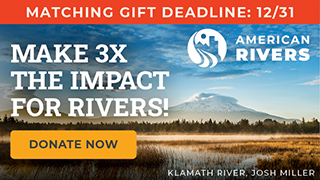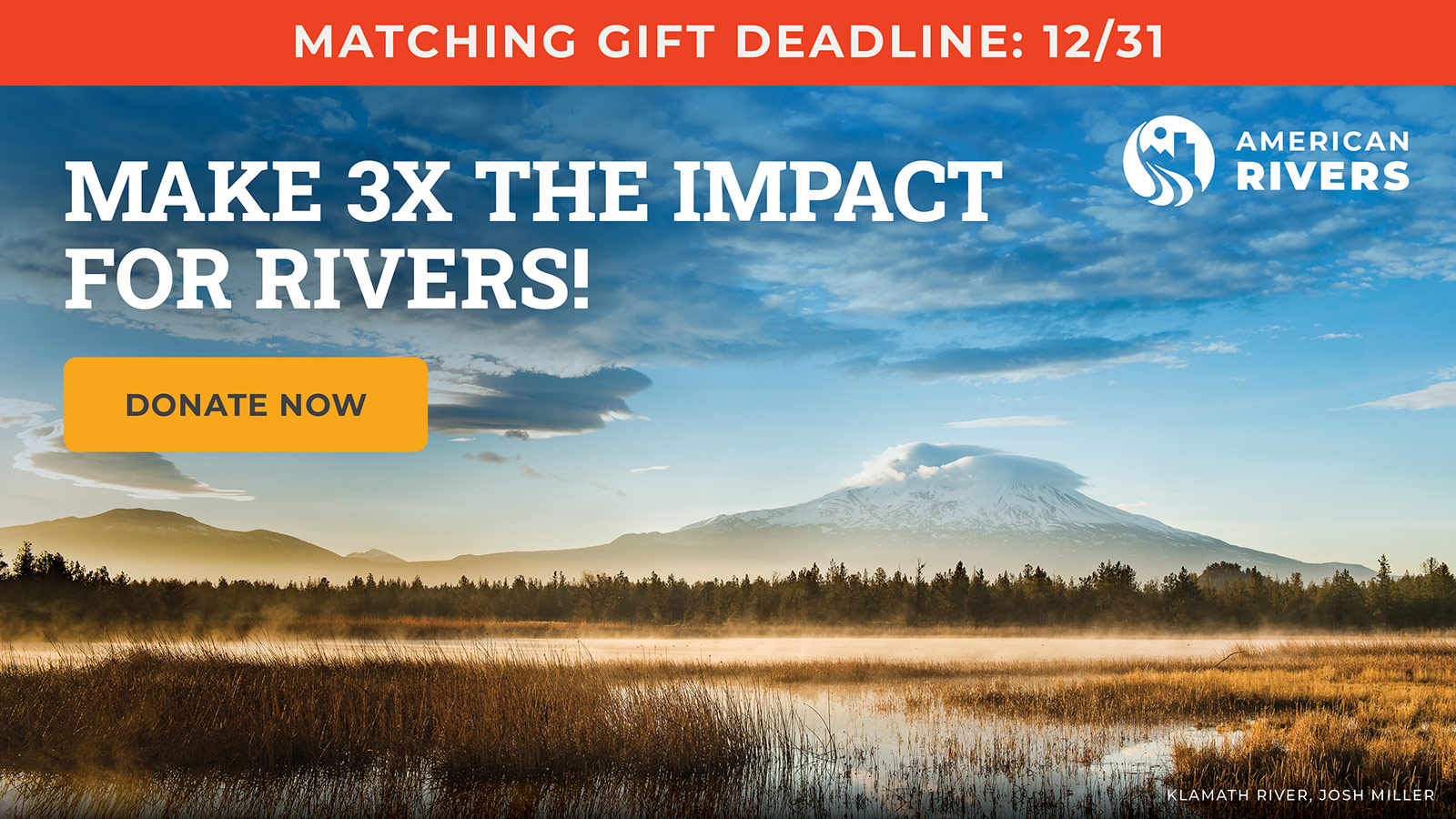Upper Colorado River Among America’s Most Endangered Rivers® of 2014
April 9, 2014
Contact:
(Washingon, DC) – American Rivers named the Upper Colorado River Basin among America’s Most Endangered Rivers® of 2014 today, shining a national spotlight on the need for Colorado Governor John Hickenlooper to prevent new water diversions and instead prioritize river protection and water conservation measures in the state water plan.
“The America’s Most Endangered Rivers report is a call to action to save rivers that are at a critical tipping point,” said Ken Neubecker of American Rivers. “We cannot afford more outdated, expensive, and harmful water development schemes that drain and divert rivers and streams across the Upper Colorado Basin. If we want these rivers to continue to support fish, wildlife, agriculture, and a multi-billion dollar tourism industry, we must ensure the rivers have enough water.”
The Upper Colorado River Basin is threatened by new water diversions. Having tapped the headwaters of the Colorado River mainstem, some Front Range water interests are currently considering diversions from rivers such as the Yampa and Gunnison— rivers not yet impaired by trans-mountain diversions.
“We can solve the puzzle of meeting water demands of new Colorado residents with an increased focus on conservation, recycling, and sharing agreements between irrigators and cities,” said Bart Miller, Water Program director for regional conservation group Western Resource Advocates. “The pieces are there, we just have to put them together.”
“Why jeopardize another West Slope river in Colorado and ruin it forever? Rivers like the Yampa and Gunnison have in-basin needs and growth that they need to adhere to first and foremost,” said Kent Vertrees, board member of the Friends of the Yampa based in Steamboat Springs, Colorado. “Add in endangered species, critical habitats, and a wild type of river recreation found in the canyon country, and these rivers would be at a major risk of losing these important values if we dewater them in a major way.”
“The Gunnison River and its headwater tributaries, though supporting spectacular fishing and recreation, are already maxed out in terms of municipal, agricultural, and non-consumptive uses. We see shortages many years in each of these sectors. So, it’s hard to figure how there is any water available to be sent out of the basin,” said Jennifer Bock, Water Director at High Country Conservation Advocates.
In 2013, American Rivers listed the Colorado River as #1 on the list of America’s Most Endangered Rivers® due to the overarching concern of outdated water management throughout the entire basin. To begin addressing this concern in the Upper Basin, Governor Hickenlooper has directed the Colorado Water Conservation Board to develop the first statewide water plan to determine how Colorado will meet its water needs in the future.
American Rivers and its partners called on Governor Hickenlooper and the Colorado Water Conservation Board to make sure the state water plan:
- Prioritizes river restoration and protection
- Increases water efficiency and conservation in cities and towns
- Modernizes agricultural practices
- Avoids new major trans-mountain diversions
The Colorado River Basin in the State of Colorado includes the mainstem Colorado River and headwater rivers, such as the Eagle, Roaring Fork, Blue, Yampa, Green, and Gunnison. The basin is home to gold medal trout fisheries, world class paddling, and scenic canyons. The resort areas of Winter Park, Breckenridge, Aspen, Steamboat Springs, Crested Butte, and Vail, as well as much of the urban Front Range (on the other side of the Continental Divide), all get some or all of their drinking water from these rivers. The Upper Colorado River Basin is home to 14 native fish species, including several fish listed as endangered.
The annual America’s Most Endangered Rivers® report is a list of rivers at a crossroads, where key decisions in the coming months will determine the rivers’ fates. Over the years, the report has helped spur many successes including the removal of outdated dams, the protection of rivers with Wild and Scenic designations, and the prevention of harmful development and pollution.
America’s Most Endangered Rivers® of 2014:
#1 San Joaquin River
California
Threat: Outdated water management and excessive diversions
At Risk: River health and resilient communities
#2 Upper Colorado River System
Colorado
Threat: New trans-mountain water diversions
At Risk: River health and recreation
#3 Middle Mississippi River
Missouri, Illinois, Kentucky
Threat: Outdated flood management
At Risk: Wildlife habitat and public safety
#4 Gila River
New Mexico
Threat: New water diversions
At Risk: River health, fish & wildlife, recreation, and tourism
#5 San Francisquito Creek
California
Threat: Dam
At Risk: Fish and wildlife habitat and public safety
#6 South Fork Edisto River
South Carolina
Threat: Excessive water withdrawals
At Risk: Fish and wildlife habitat, recreation, and water quality
#7 White River (CO)
Colorado
Threat: Oil and gas drilling
At Risk: Drinking water supplies and fish and wildlife habitat
#8 White River (WA)
Washington
Threat: Outdated dam and fish passage facilities
At Risk: Salmon, steelhead, and bull trout populations
#9 Haw River
North Carolina
Threat: Polluted runoff
At Risk: Clean water
#10 Clearwater/Lochsa Rivers
Idaho
Threat: Industrialization of a Wild and Scenic River corridor
At risk: Scenery, solitude, world-class recreational values
About American Rivers
American Rivers protects wild rivers, restores damaged rivers, and conserves clean water for people and nature. Since 1973, American Rivers has protected and restored more than 150,000 miles of rivers through advocacy efforts, on-the-ground projects, and an annual America’s Most Endangered Rivers® campaign. Headquartered in Washington, DC, American Rivers has offices across the country and more than 250,000 members, supporters, and volunteers.
Rivers connect us to each other, nature, and future generations. Find your connections at AmericanRivers.org, Facebook.com/AmericanRivers, and Twitter.com/AmericanRivers.


